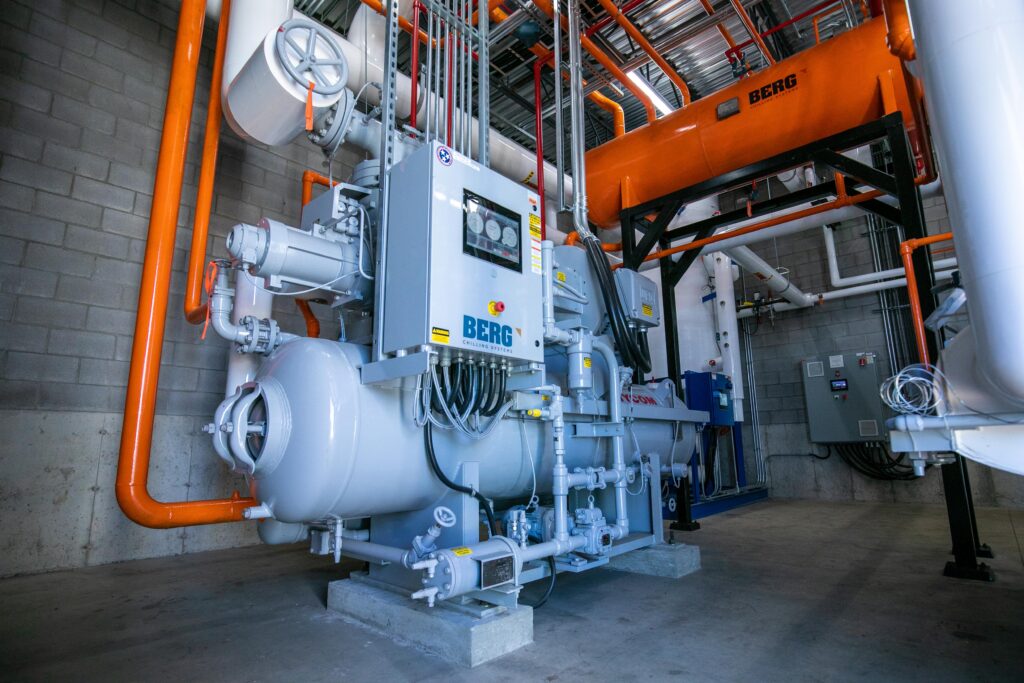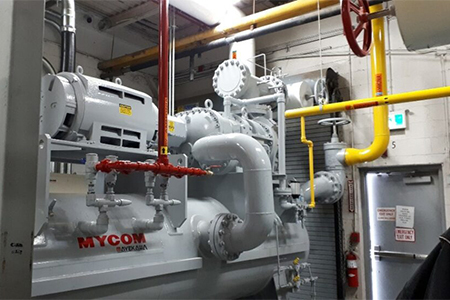There are good ways and there are not so good ways to design an industrial refrigeration system for food processing, especially when it comes to the busy chiller doorway—a cold storage chilling system’s most serious energy offender.
Understanding the difference between a heated door system and a conditioned-air vestibule can mark the difference between a process refrigeration unit that is safe, efficient, and environmentally friendly.

In recent years the food and beverage industry has seen tremendous growth. With North Americans demanding more frozen ready meals, craft beers and fresh produce than ever before, the demand for efficient chilling system design is at an all-time high.
In new systems attention is focused on building the perfect chilling system cube to lower the surface area and minimize heat gain. Cold storage warehouses are installing high density shelving racks, computerizing temperature control systems, and automating inventory applications.
While these improvements may be doubling freezer space and productivity, they are likely doubling the doorway usage as well. The passage way from warm to cold is this very place that the most energy loss is likely to occur within the refrigeration system. It is also the place where condensation is most likely to accumulate and become frost and ice—creating unsafe working conditions and requiring manpower to manage and maintain.

Some chilling systems are set up to resolve this problem using large wattage heat lamps that blow hot gas heat directly to the freezer doors or to its outer room. This artificial sensible heat combines with cold and dry exfiltration air from the freezer to lower the rooms’ dewpoint temperature. If a large amount of heat and refrigeration are introduced, it is expected that the dewpoint temperature will yield airborne ice-crystals.
While this solution may keep frost and ice from accumulating on walls and floors, it is a costly one—to both the operating budget and the environment. Maintaining a low dewpoint temperature requires an incredible amount of electrical energy. It also places a heavy load on the refrigeration system.
An improved solution is installing a conditioned air vestibule on the doorway of the chilling system to trap air between two doors spaced closely together—one leading into the freezer and the other the larger facility space. These systems are fast-acting and when properly designed, only the air entering the vestibule as a result of minor leaks and brief door openings must be exchanged. This air is uniformly mixed so that there is a greater inflow of cold and dry air from the freezer rather than warm and moist air from the outer room.
Clearly, less energy is needed to treat this smaller amount of air, even with the artificial heat and cold/dry freezer exfiltration. The lowered cost and increased energy savings make it a much better choice for your refrigeration system.
If you question whether the doorway to your industrial refrigeration system is operating at maximum efficiency the experienced design engineers at Berg can offer a complete evaluation. Contact us if you are interested in learning more about what is needed to install a conditioned-air vestibule.